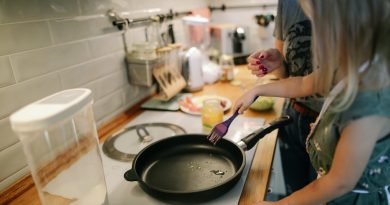How To Clean Your Kitchen Splashback?
Clean Your Kitchen Splashback Ideas:
The splashback is fundamental in a kitchen: in addition to the fact that it protects your dividers from oil and water projections, yet it is a genuine improving resource! How to clean treated steel, tiled, aluminum, or glass splashback? We give you all our cleaning tips!
1. The Silver Stone For A Stainless Steel Splash back:
Present-day, the hardened steel splashback is the last touch to a modern roused kitchen. Fingerprints and oil are the number 1 adversaries of hardened steel!
For a nickel tempered steel splashback, make sure to perfect when you detect a stain with the goal that it doesn’t get encrusted. There are a few arrangements roused by grandma’s plans for this kind of splashback:
> The silver stone, exceptionally compelling. Totally biodegradable, it regards the climate and cleans leaving a sweet fragrance of lemon.
> A barely any drops of olive oil on a material.
> Soapy water on a wipe (not utilizing the grating side of the wipe).
> A teaspoon of heating soft drink weakened in a bowl of high temp water. Wash well and wipe dry with a spotless, dry microfiber fabric.
To ensure your treated steel, a layer of finely applied beeswax will make a decent boundary against the soil.
2. Clean An Aluminum Splash back:
Like any metal surface, your aluminum splashback requires everyday support. To wash it, a few prospects permit it to be cleaned with normal items, which can be found in its pantries:
> Soapy water for little stains.
> The window cleaner with a delicate fabric.
> Water with a little lemon juice.
> Baking pop, broken up in boiling water, for dark spots.
> White vinegar, hot if conceivable, with somewhat salt, will be ideal for lime stains.
3. Wash A Glass Splash back:
Glass splash backs even lacquered and sparkling, is anything but difficult to clean, in spite of their appearance! You can utilize a basic microfiber fabric, a little water and you’re finished. A couple of drops of cleaning up fluid can likewise be included, however, this isn’t mandatory. Dry, it will likewise eliminate dust.
Subsequent choice: claystone! Regularly, it has powerful degreasing properties. Absorb it a delicate soggy wipe and focus on little roundabout movements to eliminate soil. At long last, as consistently in the family, the white vinegar will do marvels to put forth vanish the insubordinate follows without attempt.
4. For A Tiled Splash back:
The tiling is useful in splashback, and today we discover models very plan (concrete, cement, or record tiles) or simple to introduce (cement tiling …). In any case, the tiled splashback doesn’t get away from oil and culinary projections, particularly when it is set over the cooking plates.
To clean it viably, weaken cleanser in water and include a little alkali. Clothing and dark cleanser are additionally extraordinary regular other options! At long last, it is frequently the joints that get filthy the quickest on this kind of splashback: make sure to clean them consistently too.
5. Clean A Laminate Splash back:
Some splashbacks have a treated steel look however are really overlay splashbacks. They, hence, should be cleaned in an alternate route than tempered steel kitchen splashbacks.
Sudsy water is at times insufficient for their day by day cleaning. To dispose of oil stains on the cover, you can utilize window cleaner or preparing pop. A little heated water, preparing pop and you have a glue that you apply. Leave on for 10 minutes and flush well with a sodden material. Nonetheless, stay away from rough items and different wipes, at the danger of scratching your splashback!
6. Keep The Silicone Seal Intact:
The splashbacks must have exceptional water resistance in order to shield the wall they are mounted on. Since acrylic is naturally water-resistant, grouting is not necessary. Acrylic splashbacks are only effective when they have a sealer running around the sheet’s edges to prevent contaminants from penetrating the surface.
To be fully prepared to care for your acrylic splashback, you should ask the installation engineer what kind of sealer they used to finish it. With the right maintenance, some sealants can last for years, but it’s crucial to know when they need to be replaced.




